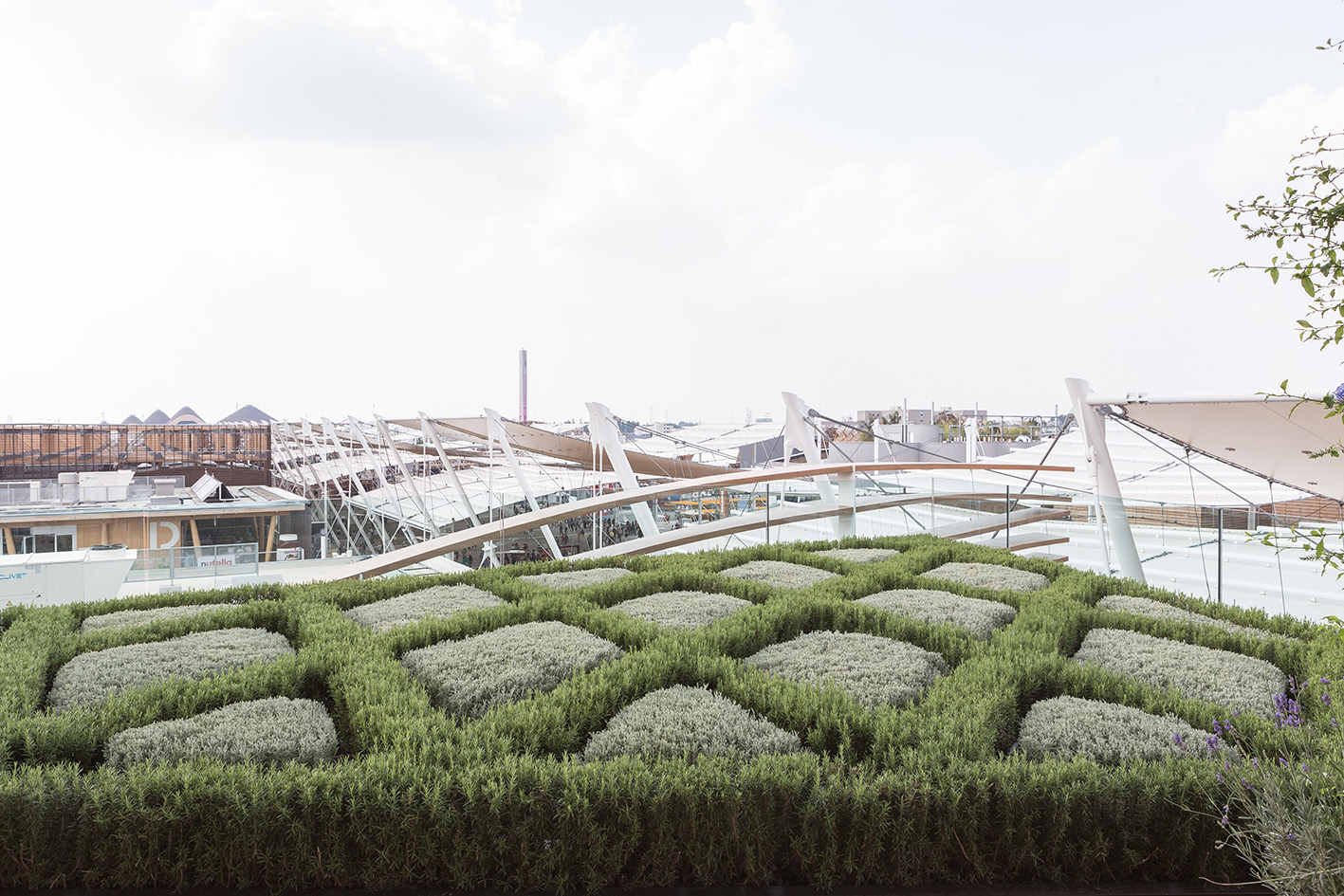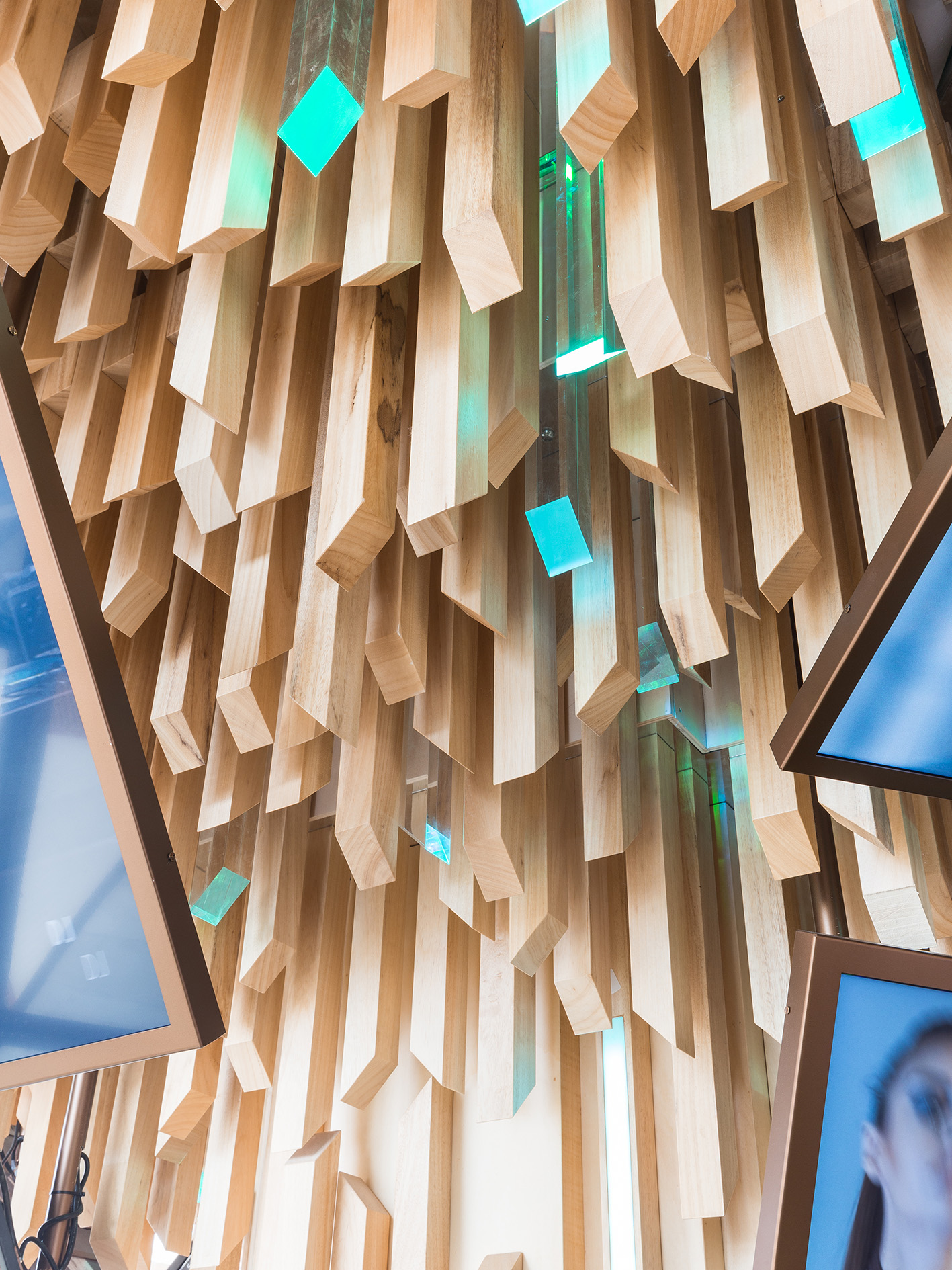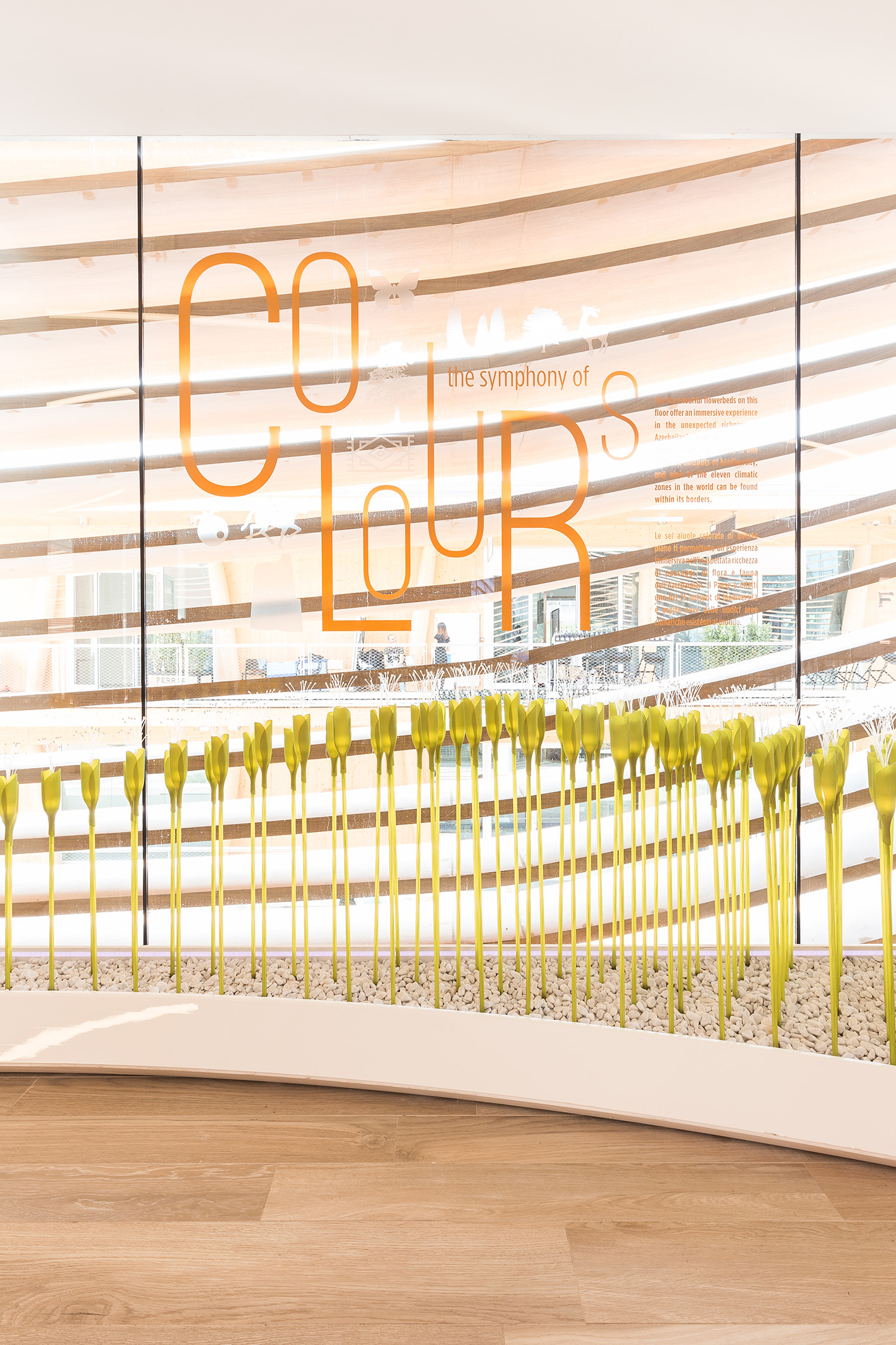16 October 2015
Present for the first time at an Expo, Azerbaijan has played a number of cards to attract attention. The first pull factor is undoubtedly the layout of the pavilion, designed by the Italian Simmetrico Network in collaboration with Arassociati, the structural engineers iDeas and the landscape architecture studio AG&P. To present this small country, the size of Austria, Simmetrico has created a fluid structure that reflects its geomorphological characteristics. This allows visitors to immerse themselves easily in a varied display made up of installations, videos and experiences of virtual reality. The common thread is idea of making the most of biodiversity, proposed through the metaphor of the biosphere: a system open to flows, but at the same time able to protect and favor development within it. The visitor is greeted by Azeri music, declared a Masterpiece of the Oral and Intangible Heritage of Humanity by UNESCO, which is represented by a large musical stave set on an interactive wall that pays homage to the traditional composition known as the mugham and the three typical instruments of the country. But the feature of the site with the greatest impact is that of its three huge glass and steel spheres, the first of which appears to be suspended in thin air inside the transparent façade. It is embraced by the undulating wooden grilles that form the walls of the pavilion, simulating the wild course of the wind that blows throughout the territory of Azerbaijan. The second sphere, which juts out toward the Decumanus, houses an imposing tree whose foliage is made up of pomegranate branches, a symbol of prosperity. At its foot a video-installation shows 100 portraits of men and women, presenting a cross section of the country’s society and of the human energy that nourishes it. The third sphere contains an upside-down tree, whose roots look to the sky in search of inspiration for a new vision of the future: among these roots are set the treasures of Azerbaijan, i.e. the works of its artisans and examples of its history and culture. Thanks to a proprietary technology derived from aeronautical engineering, the three spherical forms can easily be dismantled for transport to Baku, the Azeri capital, and reassembly there. The route through the pavilion’s biospheres leads to the green terrace on the top floor, which also offers a privileged view of the whole of the Expo.






















